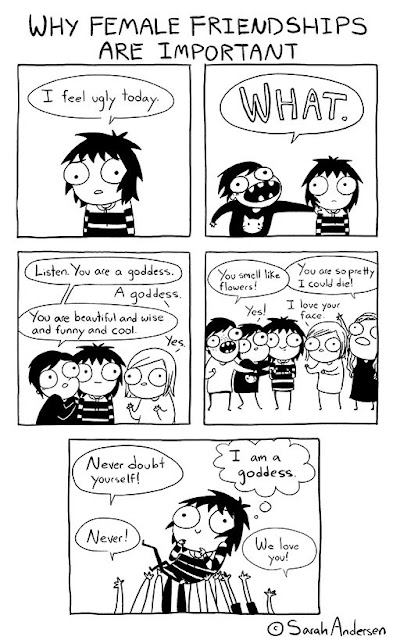It isn't unusual for me to analyze my body. In fact, when you couple high self-awareness with low self-esteem, the action of self-centered thinking actually seems inevitable. Yet, while my thoughts do
typically revolve around my bodily deficiencies - too much of this, not enough of that - lately I've found something else creeping in. I've begun to see my body as rebellion.
It started quietly. In early August I headed towards the lake to run and as I stepped from the curb to the asphalt, I felt the impact of my feet connecting with the new terrain. It was a single second of perfect, seamless motion uninterrupted by fatigue or pain and I stood in the street, baffled. My mind flashed as I hurried to connect sensation with language. I had forgotten what it meant to feel solid.
As females, we're taught to conflate delicacy with desirability. Slender bodies and thinness are prized as feminine precisely because these fragile frames take up less space than the more imposing "masculine" shapes of broad shoulders and thick bodies. As a society, we've taken last century's explicit mandate that women should cower quietly and made it implicit through clever re-branding.
Gone are the reminders that females are the lesser sex and in there place stands glossy tabloids that project the idealized female. (She's white, cis, and devoid of body hair, for those of you wondering.) Yet, while the branding has changed, the message remains the same: making ourselves small is both our mission and our reward. It is desirable to shrink, beautiful even. So, I tried to shrink and with each forgone meal I wrote a history of female oppression on my body.
That was until August. Solidity struck me like the siren's call in the middle of State Street and though the old patterns of shrinking do frequently crash over me, I've been trudging through the choppy waters to seek out that feeling. It would not be honest to say I love my body, but I become more respectful of it every day. I see it as a tool to begin demanding my space back. The fat deposits on my stomach, the thick muscle in my thighs, even the slowly growing biceps on my arms are tiny instances of resistance.
typically revolve around my bodily deficiencies - too much of this, not enough of that - lately I've found something else creeping in. I've begun to see my body as rebellion.
It started quietly. In early August I headed towards the lake to run and as I stepped from the curb to the asphalt, I felt the impact of my feet connecting with the new terrain. It was a single second of perfect, seamless motion uninterrupted by fatigue or pain and I stood in the street, baffled. My mind flashed as I hurried to connect sensation with language. I had forgotten what it meant to feel solid.
As females, we're taught to conflate delicacy with desirability. Slender bodies and thinness are prized as feminine precisely because these fragile frames take up less space than the more imposing "masculine" shapes of broad shoulders and thick bodies. As a society, we've taken last century's explicit mandate that women should cower quietly and made it implicit through clever re-branding.
Gone are the reminders that females are the lesser sex and in there place stands glossy tabloids that project the idealized female. (She's white, cis, and devoid of body hair, for those of you wondering.) Yet, while the branding has changed, the message remains the same: making ourselves small is both our mission and our reward. It is desirable to shrink, beautiful even. So, I tried to shrink and with each forgone meal I wrote a history of female oppression on my body.
That was until August. Solidity struck me like the siren's call in the middle of State Street and though the old patterns of shrinking do frequently crash over me, I've been trudging through the choppy waters to seek out that feeling. It would not be honest to say I love my body, but I become more respectful of it every day. I see it as a tool to begin demanding my space back. The fat deposits on my stomach, the thick muscle in my thighs, even the slowly growing biceps on my arms are tiny instances of resistance.




